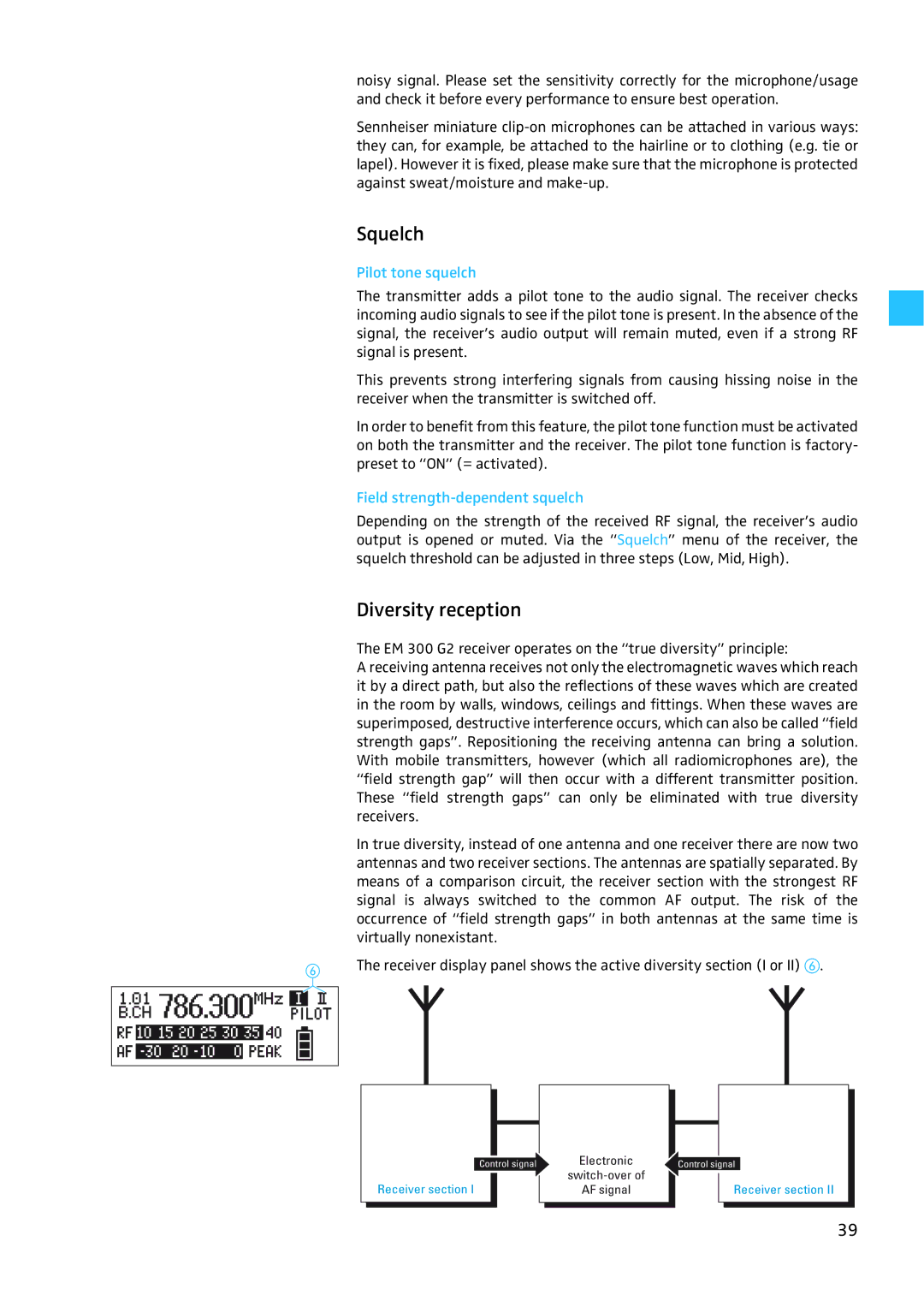
noisy signal. Please set the sensitivity correctly for the microphone/usage and check it before every performance to ensure best operation.
Sennheiser miniature
Squelch
Pilot tone squelch
The transmitter adds a pilot tone to the audio signal. The receiver checks incoming audio signals to see if the pilot tone is present. In the absence of the signal, the receiver’s audio output will remain muted, even if a strong RF signal is present.
This prevents strong interfering signals from causing hissing noise in the receiver when the transmitter is switched off.
In order to benefit from this feature, the pilot tone function must be activated on both the transmitter and the receiver. The pilot tone function is factory- preset to “ON” (= activated).
Field strength-dependent squelch
Depending on the strength of the received RF signal, the receiver’s audio output is opened or muted. Via the “Squelch” menu of the receiver, the squelch threshold can be adjusted in three steps (Low, Mid, High).
Diversity reception
The EM 300 G2 receiver operates on the “true diversity” principle:
A receiving antenna receives not only the electromagnetic waves which reach it by a direct path, but also the reflections of these waves which are created in the room by walls, windows, ceilings and fittings. When these waves are superimposed, destructive interference occurs, which can also be called “field strength gaps”. Repositioning the receiving antenna can bring a solution. With mobile transmitters, however (which all radiomicrophones are), the “field strength gap” will then occur with a different transmitter position. These “field strength gaps” can only be eliminated with true diversity receivers.
In true diversity, instead of one antenna and one receiver there are now two antennas and two receiver sections. The antennas are spatially separated. By means of a comparison circuit, the receiver section with the strongest RF signal is always switched to the common AF output. The risk of the occurrence of “field strength gaps” in both antennas at the same time is virtually nonexistant.
The receiver display panel shows the active diversity section (I or II) .
Control signal
Receiver section I
Electronic
AF signal
Control signal
Receiver section II
39
